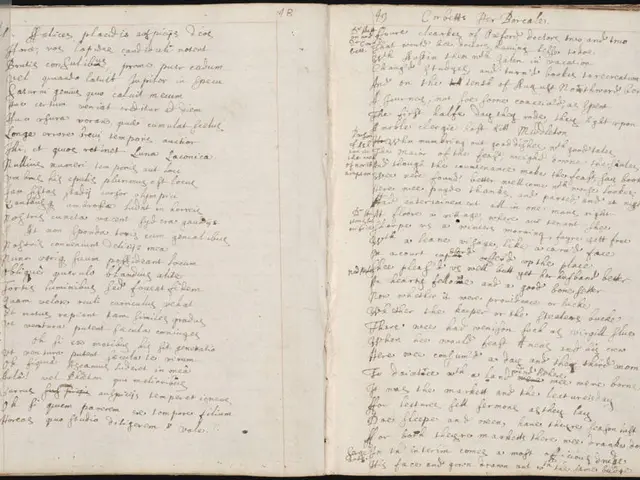Examining the Viewpoints on Lab-Created Gems and their Geographical Backgrounds in Mined Stones
In a recent article published in The Journal of Gemmology, Jack M. Ogden discusses the ways to improve the transparency and usefulness of gemmological testing and grading reports, particularly focusing on the geological origin of gemstones. One key factor highlighted in the article is the International Standard ISO/IEC 17025, which has a significant impact on these reports.
The standard ensures that laboratories conducting assessments on gemstone origins are independently assessed and certified to operate competently. This accreditation enhances trust in the laboratory's ability to provide accurate and reliable data, which is crucial for maintaining transparency in gemstone origin reports.
Laboratories must also follow standardized procedures and maintain detailed records, ensuring that all research is conducted in compliance with international standards. This compliance helps ensure that reports are transparent and consistent across different laboratories.
By adhering to ISO/IEC 17025, laboratories ensure that their testing methods are consistent and reliable, which is essential for determining the geological origin of gemstones accurately. This consistency makes the reports more useful by providing stakeholders with reliable information.
Reports from ISO/IEC 17025-accredited laboratories are recognized globally, which enhances their usefulness in international trade and marketplaces. This recognition helps in establishing the authenticity and value of gemstones based on their origin.
The article also emphasizes the importance of distinguishing objective facts from subjective interpretations in gemstone reports. The use of the word 'probably' in a report can be a sign of wisdom rather than weakness, as it acknowledges the limitations of certainty in some cases.
However, the author suggests that when conclusions presented in a lab report are opinions, not facts, they should be clearly expressed as such. This transparency is crucial for ensuring that users of the reports have a clear understanding of the data or observations leading to the conclusions.
The practice of a dealer getting more than one lab report for the origin of a sapphire and retaining any that say Kashmir and disposing of the rest is likely to be illegal. Major auction houses list the findings of different gem labs in their catalogues, even if they disagree, demonstrating the importance of transparency and the recognition of multiple opinions in the industry.
The technology to identify a gemstone's geologic and geographic origin has improved in the last decades. For instance, a 30.08 ct sapphire sold at auction in 2014 was accompanied by three lab reports that gave two different geographical origin opinions - Sri Lanka and Burma (Myanmar).
In conclusion, ISO/IEC 17025 enhances both the transparency and usefulness of geological origin reports for gemstones by ensuring that laboratories operate to a high standard, providing reliable and internationally recognized results. This standard is a significant step towards improving the integrity and reliability of the gemstone industry.
- To boost the trust and reliability of gemmology reports, laboratories should aim for ISO/IEC 17025 accreditation, which guarantees competent and independent operation.
- Adherence to international standards like ISO/IEC 17025 is key in maintaining consistency in gemstone origin reports across different laboratories.
- Reports from ISO/IEC 17025-accredited laboratories hold importance in international trade and marketplaces, helping to establish authenticity and value based on geological origin.
- Transparent acknowledgment of limits in certainty, such as using 'probably' in reports, is essential for maintain the credibility of gemstone reports.
- In the gemstone industry, understanding the significance of multiple opinions is crucial for maintaining an honest and reputable market.
- Advanced technology in recent decades has facilitated the identification of a gemstone's geologic and geographic origin, contributing to the authenticity and value assessment in the gemstone market.




